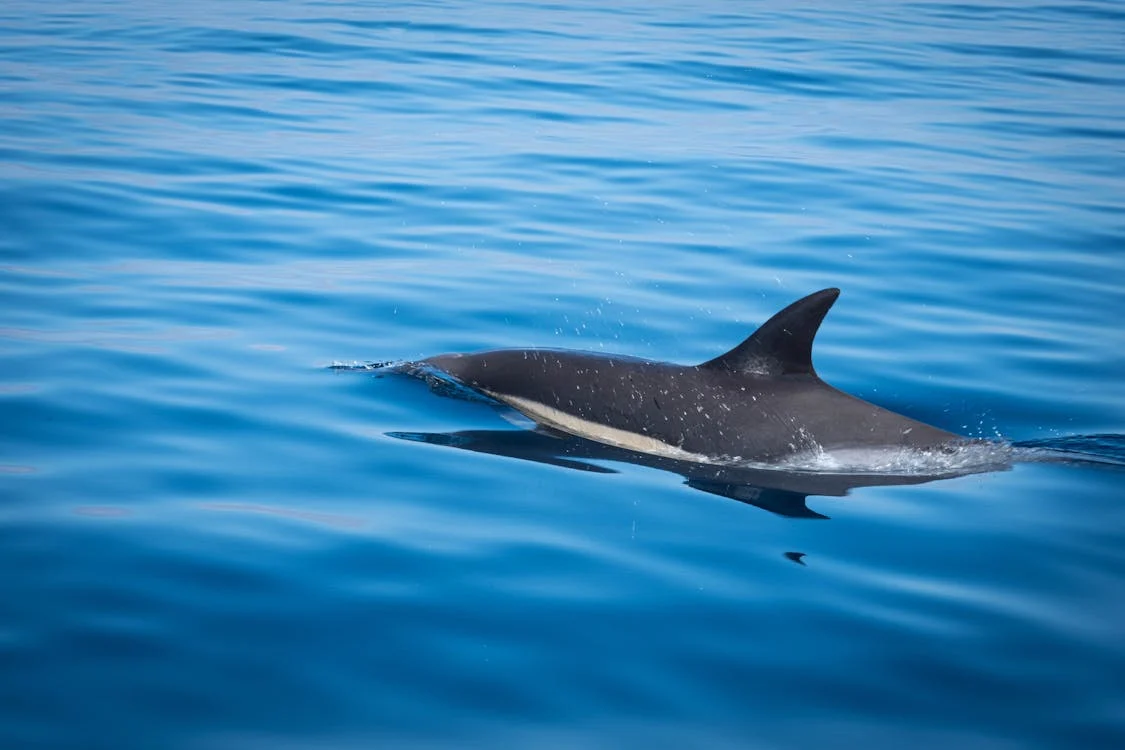Dolphins, with their playful nature and remarkable intelligence, have long captivated human imagination. While their acrobatic leaps and social behaviors are widely observed, one lesser-known but equally fascinating aspect of their lives is their migratory behavior. Dolphins, much like birds or whales, undertake seasonal migrations, navigating vast ocean expanses. These migrations are essential for their survival and are influenced by food availability, water temperature, and reproductive needs.
Why Do Dolphins Migrate?
The primary driver of dolphin migration is the search for food. Dolphins, especially species like the common dolphin (Delphinus delphis) or the bottlenose dolphin (Tursiops truncatus), follow fish stocks, which are subject to seasonal movements. As fish move with ocean currents and the changing water temperatures, dolphins pursue them to ensure their sustenance. In warmer months, dolphins often migrate toward cooler waters rich in fish, and in colder months, they move to warmer regions where food sources are more abundant.
Reproduction is another key factor. Certain dolphin populations migrate to specific regions to breed or give birth. These areas, often warmer or safer from predators, provide optimal conditions for newborn dolphins. Calving grounds tend to be shallow coastal regions where mothers can care for their calves in calmer waters.
The Global Journey of Dolphin Species
Dolphins are found in almost every ocean, but their migratory behaviors vary significantly by species and region.
1. Common Dolphin (Delphinus delphis)
Common dolphins are known for their extensive migrations. These dolphins are often found in tropical and temperate waters but move great distances in search of food. For example, in the Eastern Pacific, they migrate north during the warmer months and south during the colder ones, covering thousands of miles annually.
2. Bottlenose Dolphin (Tursiops truncatus)
Bottlenose dolphins have more localized migratory patterns. Coastal populations, especially in regions like the Gulf of Mexico, tend to move between coastal waters and deeper offshore areas depending on the season and food availability. For instance, in the Atlantic, bottlenose dolphins near the U.S. East Coast migrate north during the spring and summer to find fish-rich waters and return south in autumn.
3. Spinner Dolphin (Stenella longirostris)
Spinner dolphins, famous for their acrobatic spinning behaviors, are primarily found in tropical and subtropical waters. Their migration patterns are more defined by daily movements rather than long seasonal migrations. These dolphins travel between deep offshore feeding grounds at night and coastal resting areas during the day, especially around islands in the Pacific Ocean.
4. Dusky Dolphin (Lagenorhynchus obscurus)
Dusky dolphins, which inhabit the cooler waters of the Southern Hemisphere, exhibit notable seasonal migrations. Off the coast of New Zealand and Argentina, they move between inshore and offshore waters based on prey availability. During summer, they tend to inhabit coastal areas, while in winter, they migrate to deeper offshore waters.
How Do Dolphins Navigate?
The mystery of how dolphins navigate vast ocean distances with precision remains partially unsolved. However, scientists believe that dolphins rely on several factors to guide them. Echolocation, a sophisticated sonar system, allows dolphins to “see” their environment using sound. This ability helps them detect underwater features like seafloor ridges or coastline contours, which they may use for navigation.
Dolphins are also believed to sense Earth’s magnetic field. Some species have tiny magnetic crystals in their brains that may enable them to detect geomagnetic forces. This ability could guide them during migrations, much like how birds use magnetic fields to orient themselves during long flights.
Additionally, dolphins likely use social learning. Dolphins live in pods, and younger dolphins often learn migratory routes from older, experienced members. This knowledge is passed down through generations, enabling dolphin populations to sustain long-term migration patterns.
Human Impact and Conservation Efforts
Dolphin migrations, however, are increasingly under threat. Climate change is altering ocean temperatures and currents, impacting the availability of prey. Overfishing depletes fish stocks, forcing dolphins to travel even greater distances to find food. Moreover, noise pollution from ships and offshore drilling can interfere with dolphins’ echolocation abilities, disorienting them during migration.
Efforts are underway to protect these migratory routes. Marine protected areas (MPAs) have been established in key regions to safeguard feeding and breeding grounds. International collaborations are also crucial in tracking dolphin movements, with satellite tagging and acoustic monitoring offering valuable data on migration patterns. Understanding these routes allows conservationists to predict changes and implement strategies to protect dolphin populations.
Conclusion
Dolphin migrations are a testament to the adaptability and intelligence of these remarkable marine mammals. From the cooler waters of the Southern Hemisphere to the tropical seas near the equator, dolphins traverse vast distances in search of food and safe breeding grounds. As we continue to study their global journeys, it becomes increasingly clear that protecting these migrations is essential not just for dolphins but for the health of marine ecosystems as a whole. By conserving their migratory paths, we ensure that dolphins can continue to thrive in our ever-changing oceans.

